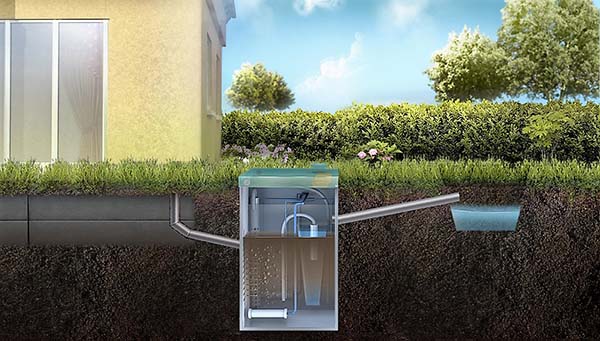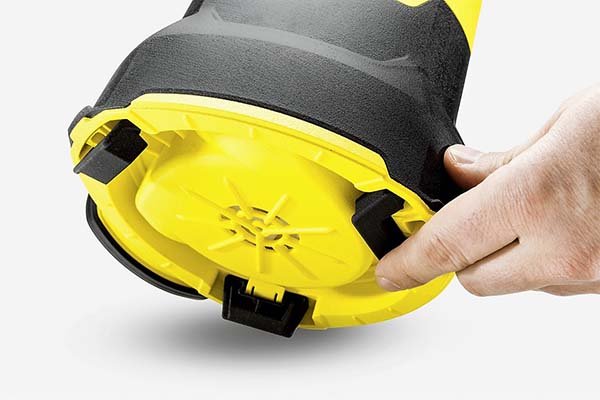Float drainage pump: device and principle of operation
In the case of a submersible type pump, its housing is completely sealed, which allows it to be completely placed in a liquid without compromising the device itself or performance. Such pumps are characterized by much greater power, since in addition to simple pumping, they must also raise the liquid to a certain height. And that requires high pressure. If we compare them with surface-type pumps, then submersible ones have the following advantages:
- Complete versatility. They are able to pump out polluted water, in which there are large elements.
- Great level of productivity.
- During operation, the device makes almost no noise.
Disadvantages:
- The limitation regarding the immersion depth, which will be 30 cm. In addition, the motors of such equipment need constant cooling, and for this the device must be surrounded by liquid.
- From time to time the device needs to be cleaned, just like the float switch. Constantly being in a dirty liquid, they get dirty very quickly.
- Repair work is difficult, since the body of the float drain pump is completely sealed.
float device
All units that are equipped with a float switch operate in automatic mode. This eliminates the constant monitoring of the level of contaminated liquid, preventing overfilling of the tank. In this case, the equipment will not work and idle. When the liquid reaches the highest set mark, the pump automatically turns on. After the water level drops to the minimum level, the device will automatically turn off.
It is better to set the minimum shutdown level above the 0.5 cm mark. This will avoid overheating of the equipment in the future, subject to an emergency. In this case, none of the elements will fail in case of deviation from the requirements for operation.
The sensor itself can be:
- installed separately (in most cases);
- located inside the housing (works based on the sensor).
The floats located outside the body are made of special plastic, which has a small metal ball and a switch inside, which is connected directly to the network. Depending on the liquid level, the internal contacts are closed using the same ball. Opening occurs according to the same principle. But the electric type switch can be located outside the case. A cable or cord will be used to connect to the device. Automatic floats are:
- heavy;
- lungs.
Depending on the model of the device, the length of the cord can be from 2 to 10 m. In most cases, submersible models are equipped with built-in sensors. Such devices are much more convenient to operate. In this case, the element located on the body will not be able to catch and be damaged by any protrusions or stones located in the container. However, such devices with built-in floats are used only for pumping clean liquid.
Its main functions are:
- device management;
- automated level sensor (level control).
How to install a float

Before installing equipment equipped with a float switch, installation work must begin by measuring the level of current that is consumed by the equipment. Its level must be below the permissible level (its indicator can be found in the attached operating instructions). Experts recommend installing directly in the recess.
You will need a cable and a small weight (it is included in the kit):
- The weight is put on the cord, after which the float stroke is determined (free and its parameters).
- The latch will help secure it.
- The cable is attached from the outside.
- The switch is connected to the pump.
All installation work is allowed only if there is no danger of hanging or catching it inside the container. If we are talking about placing several floats at the same time, then they are placed in a special rod. For this, a plastic pipe is used.
For proper installation you will need:
- expose yourself;
- after adjust;
- place in such a way that the radius of their work does not touch;
- cables are fastened with clamps.
The number of floats used will depend on the control panel installed and the drain pump model. Also an important role is played by the number of additional elements and the number of switches. To improve the operation of the device, in some cases it is recommended to install additional rods that will affect the performance of the device. The places of their installation, as well as the number, must be provided for by the design decision or in the course of the installation work.
What material is used to make the devices

Often, for the manufacture of modern models of float drainage pumps, cast iron and stainless steel are used in combination with other materials that will be needed to assemble the device body and other necessary parts. They are fairly easy to compare:
- stainless steel. Sufficiently reliable and time-tested material, the service life of which is calculated in decades;
- cast iron. The strength of the device made from this material will be amazing, but its weight will be huge, and the cost is quite high;
- plastic. It is the cheapest material, the durability of which is low.
Equipment whose body is made of plastic is in great demand, while the wheel itself is made of steel. It is excellent and the best value for money. Relatively recently, several models of these units have entered the market, the working blades of which are made of technical polymer. They are cheaper than their technological counterparts. Characterized by durability, strength and practicality.









